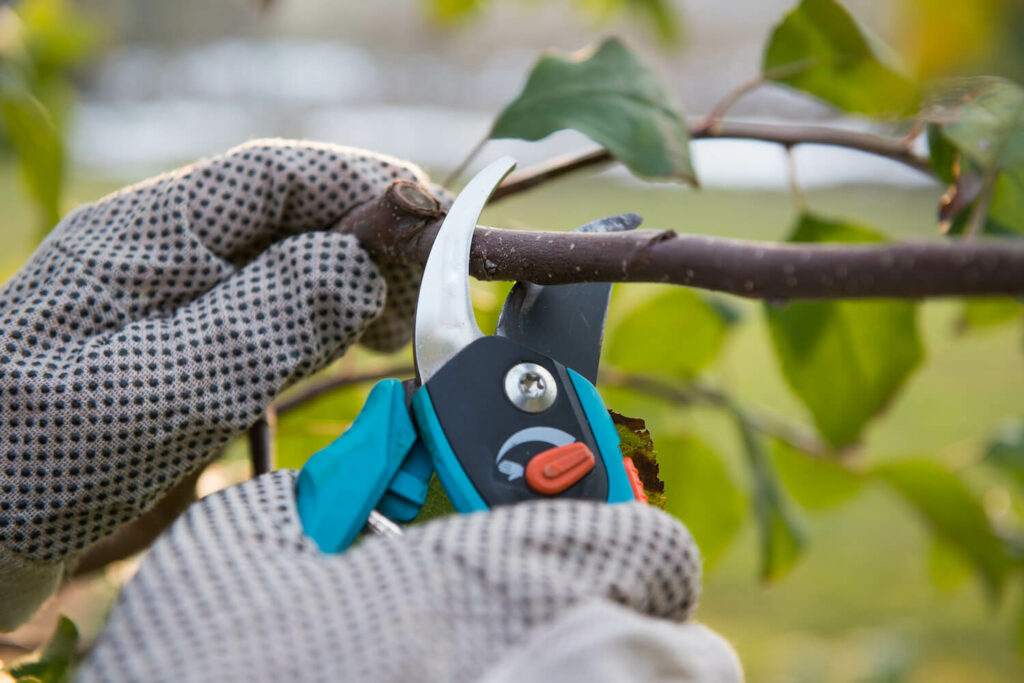
If you have trees on your property, it’s essential to keep them well-maintained to ensure their health and safety. Tree trimming and tree pruning are two important techniques that can help achieve this goal. While the terms “tree trimming” and “tree pruning” are often used interchangeably, there are distinct differences between them. In this blog post, we’ll explore the differences between tree trimming and tree pruning and why they are essential for maintaining healthy trees in Oregon.
Tree Trimming: What Is It?
Tree trimming involves the removal of unwanted or excess branches from a tree. The primary purpose of tree trimming is to improve the tree’s appearance, remove dead or diseased branches, and prevent safety hazards. Tree trimming is often done for aesthetic reasons, as well as to promote healthy growth and fruit production.
Tree trimming can involve cutting branches of all sizes, from small twigs to large branches. Depending on the size and location of the branch, different tools may be used. For small branches, hand pruners or loppers may be used, while larger branches may require a pruning saw or chainsaw.
Tree Pruning: What Is It?
Tree pruning is a more specialized form of tree trimming. It involves selectively removing branches to improve the tree’s health, structure, and safety. Tree pruning is done to remove diseased or damaged branches, shape the tree, and promote healthy growth.
Tree pruning involves making strategic cuts to specific branches to achieve the desired outcome. This requires a deeper understanding of tree biology and structure, as well as an understanding of pruning techniques. Depending on the type of tree and the desired outcome, different pruning techniques may be used.
When to Trim vs. Prune?
Tree trimming and pruning are both important for maintaining healthy trees, but they are used for different purposes and at different times.
Tree trimming is typically done on a regular basis to maintain the tree’s appearance and promote healthy growth. The best time to trim trees is during the dormant season, which is typically late fall to early spring. During this time, the tree is not actively growing, which makes it easier to see the tree’s structure and which branches need to be removed.
Tree pruning, on the other hand, is done less frequently and is typically done to improve the tree’s health and structure. The timing of pruning depends on the type of tree and the desired outcome. For most trees, pruning is done during the dormant season to promote healthy growth. However, some trees, such as fruit trees, may require pruning during the growing season to promote fruit production.
Tree Trimming vs. Tree Pruning Techniques
Now that you know the difference between tree trimming and pruning and when each is appropriate, let’s take a closer look at the techniques used for each.
Tree Trimming Techniques:
- Remove dead, diseased, and damaged branches first: These branches can harbor pests and disease and should be removed before trimming healthy branches.
- Trim crossing branches: Crossing branches can rub against each other, causing damage and disease. Remove one of the crossing branches to prevent this.
- Cut back branches that are too long: Long branches can be hazardous and should be cut back to reduce the risk of falling.
- Thin out the tree’s canopy: Thinning out the canopy allows more light to reach the tree’s interior branches, promoting healthy growth.
- Shape the tree: Trim branches to shape the tree as desired.
Tree Pruning Techniques:
- Crown cleaning: Crown cleaning involves removing dead, diseased, or broken branches from the tree’s crown.
- Crown thinning: Crown thinning involves removing a portion of the tree’s branches to improve air and light penetration.
- Crown raising: Crown raising involves removing lower branches to provide more clearance for people and vehicles.
- Crown reduction: Crown reduction involves selectively removing the tree’s branches to reduce its overall size.
- Structural pruning: Structural pruning involves removing branches that are weakly attached or crossing, which can help prevent future damage and improve the tree’s structure.
Tree Trimming vs. Tree Pruning: Which is Right for Your Trees?
Now that you understand the differences between tree trimming and pruning, you may be wondering which is right for your trees. The answer depends on your trees’ needs, as well as your goals for their appearance and health.
If you’re primarily concerned with the appearance of your trees, tree trimming is likely the best option. Trimming can help shape your trees and remove any unsightly or hazardous branches.
If you’re more concerned with your trees’ health and structure, tree pruning is likely the best option. Pruning can help remove diseased or damaged branches, improve air and light penetration, and promote healthy growth.
It’s important to note that both tree trimming and pruning should be done by a professional arborist. Attempting to trim or prune trees yourself can be dangerous and can result in damage to the tree or property.
Conclusion
Tree trimming and pruning are both essential techniques for maintaining healthy trees in Oregon. While the terms are often used interchangeably, they refer to distinct processes with different goals. Tree trimming is primarily done for appearance and safety reasons, while tree pruning is done to improve the tree’s health and structure.
The timing of tree trimming and pruning is also important, as it can affect the tree’s growth and health. Tree trimming is best done during the dormant season, while tree pruning is typically done during the growing season or dormant season, depending on the type of tree and the desired outcome.
Whether you need tree trimming or pruning services, it’s important to work with a professional arborist who can provide expert advice and care for your trees. With proper care, your trees can remain healthy, beautiful, and safe for years to come.
